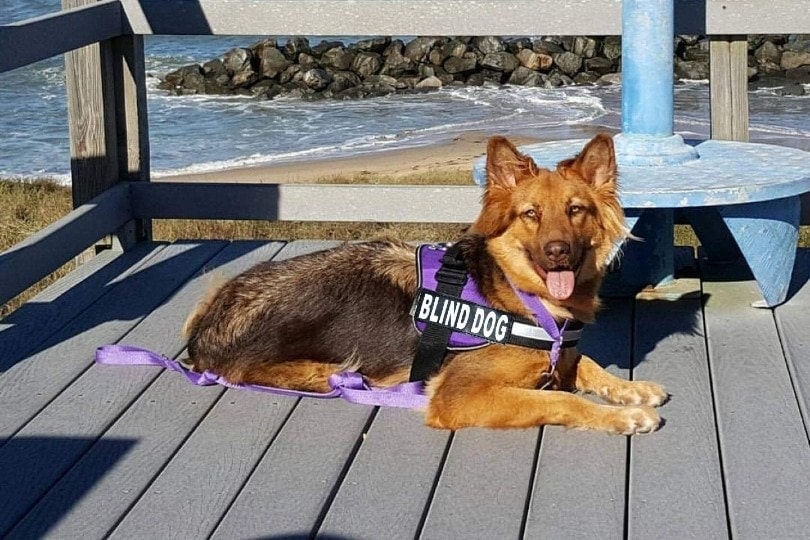How to Become a Dog Walker: Step-By-Step Guide

Updated on
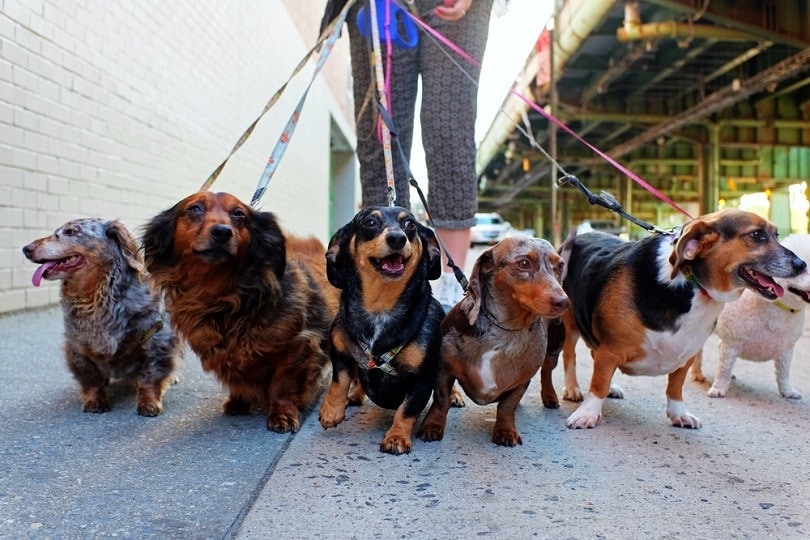
It sounds like a dream job: You spend your days outside in the fresh air and getting exercise with a variety of adorable furry companions by your side. What better way to make some cash than by being a dog walker?
However, actually finding work as a dog walker — and making enough money to live on from doing it — is easier said than done. Many people flame out, not because they don’t enjoy the work, but because they don’t know how to make it work from a financial perspective.
In the guide below, we’ll show you how to become a dog walker, as well as how to be one of the few people who truly succeed at it.
How to Become a Professional Dog Walker
The groundwork for success is laid down long before you find your first client. The steps below will make sure you get off on the right foot, which will make it easier for you to make as much money as possible, as quickly as possible.
1. Be Realistic About Your Goals

Before you start, you should have an idea about what your end goals are and how you plan to achieve them. That includes being honest with yourself about how hard you want to work and how much money you want to make.
Can you make a great deal of money as a dog walker? Yes, but you won’t do it by simply taking other people’s pooches for strolls. People who make money in the dog walking business do it by offering other services (like training) or by creating an agency with other dog walkers who work for them.
Both of those require more work and ambition, and it’s totally fine if they don’t appeal to you. However, you need to understand that if all you do is walk dogs, then you’ll be an hourly employee with a hard cap on your earning potential.
You should be realistic about what that potential is as well. For example, you may think that if you charge $25 for a 30-minute walk, you can make $50 per hour. However, you have to factor in travel time, delays caused by traffic or bad luck, and other factors that could eat into your profits. It’s unlikely that you’ll make anywhere near $50 per hour in the long run.
Many people walk dogs while they’re young or as a way to make fun and easy money on the side. It’s a great gig for those things, but if you want to make a living at it, you’ll have to be a bit of an entrepreneur as well.
2. Learn Your City as Well as You Can
You may think that you’re already familiar with your city, but as a dog walker, you’ll need to know it like the back of your hand.
This means knowing the laws regarding dog walkers in your area (some require licensing, insurance, and other paperwork). The last thing you want to do is run afoul of the law while making a few extra bucks.
Mostly, though, it means learning the layout of the area. This could mean anything from finding the best hiking trails for dogs to learning which areas you definitely don’t want to walk through.
It also means learning the most efficient ways to travel through the city. Time stuck in traffic is money lost, so you don’t want to lose hours of your day raging in gridlock. The more time that you can spend walking, the more cash you’ll end up with at the end of the day.
Some of this learning will only come with practice, as there are things you won’t notice until you actually have a dog to walk. Much of it can be done beforehand, though, and the better acquainted you are with your city, the better your chances of success will be.
3. Get All Your Gear Together

One of the great things about being a dog walker is that it’s one of the cheapest businesses that you can start. That doesn’t mean you won’t need a few essentials, though.
Your clients should supply leashes, harnesses, and the like. However, some clients believe that their babies are the sweetest dogs on Earth, refusing to acknowledge that their pups turn into holy terrors on the streets. You may want to invest in a harness yourself, so you can use it to better control unruly dogs.
It’s a good idea to have a treat pouch and dog treats on hand at all times too. Sometimes your dog won’t cooperate unless they’ve been bribed, so having a treat handy is a great way to ensure obedience. If you decide to do training as well, this makes it easy to reward the dog for good behavior as quickly as possible.
Take your safety seriously as well. Carry pet deterrent spray to protect against stray dogs, and you may want to carry pepper spray or something similar to protect against feral humans. You should also wear a reflective vest if you plan on working after the sun goes down.
Be sure to think of your comfort. Get a pair of comfortable shoes, and buy a nice pair of wireless headphones if you plan on listening to music or podcasts while you work (be sure you can still hear what’s happening around you, though). You should also invest in a GPS unit if you don’t have a cell phone because you don’t want to get lost out there.
4. Learn Basic Medical Skills
You’ll need basic first-aid knowledge, for both you and the dogs that you’ll be walking. After all, while you’ll hopefully never encounter a major injury, little mishaps are inevitable.
You should know how to treat a limping dog and how to recognize conditions like heat exhaustion. You should also be able to treat minor cuts and scrapes.
Most importantly, though, you should know how to treat dog bites. While you may not deal with aggressive dogs often, any dog can snap if caught at the wrong moment, so you want to be able to handle the issue before it gets out of hand.
You can learn basic canine first aid from your local Humane Society, or you can search the internet for information. YouTube is an invaluable resource for both canine and human medical advice (just be sure you’re on a trustworthy channel).
Of course, if you encounter any serious medical issues, you should call in the pros. Most of the basic stuff you can handle on your own, though — provided that you have the necessary know-how, that is.
5. Get in Shape

Dog walking is great exercise, but it can be hard on your body, especially if you’re not used to much physical activity.
You shouldn’t expect to go from a sedentary lifestyle to putting in a full day’s worth of walking overnight. If you do, your reward will likely be a bunch of sore muscles and blisters on your feet.
Begin walking around your neighborhood for an hour or two a day (with a dog, if possible). This will get you acclimated to the actual work. Wear the shoes that you plan on wearing as well, so you know for sure if they’ll cause issues after a long day.
You may want to join a gym as well, just to get in a little extra cardio or resistance training. This isn’t necessary, but you’ll be grateful that you did when you’re still able to control an English Mastiff after 8 hours of walking.
The 5 Steps to Become a Dog Walker:
Once you have all the necessary groundwork in place, it’s time to start earning money. Getting your first client is one of the hardest things about being a dog walker, so don’t be discouraged. This part may take a little time.
However, the good news is that the skills below will make it easier for you to find all the work that you can handle in as little time as possible.
1. Start in Your Social Circle
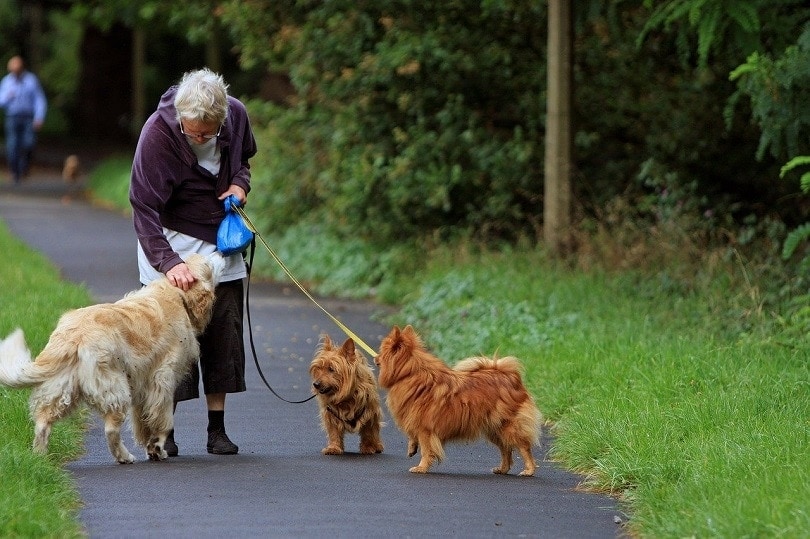
A good way to get your feet wet is to see if anyone you know is in the market for a dog walker. This could mean asking family, friends, or neighbors if they have a pet that needs to be taken out every once in a while.
This gives you access to a wide range of people who know you, trust you, and are likely willing to help you. They’re also more likely to be forgiving of any mistakes you make while you’re learning the ropes (although no one’s likely to forgive any harm that comes to their dog, so be careful).
You may also want to spread the word around any social organizations you belong to, such as your school, any extracurricular activities, and your place of worship, if you have one.
The idea here is to learn the trade, build up a positive reputation, and garner testimonials that you can use to find other work. If you can develop a sterling reputation, you’ll find that it’s much easier to bring in new clients.
Now, whether you decide to charge these initial customers or not is up to you. Some people do it for free in exchange for a testimonial; others do it for a sweetheart price and some charge full price. Whatever you do, make sure the arrangement is beneficial for both parties, and don’t allow yourself to get taken advantage of.
2. Decide Whether to Stay Solo or Join an Agency
Once you’re confident in your skills, you have a decision to make. You can either keep going as a solo freelancer, or you can join an agency. There may be local agencies in your area, or you can join a service like Rover, WagWalking, or similar companies.
Staying on your own gives you complete control over your business. You can decide which clients to take (or fire), you set your own schedule, and you keep all the money that you make. If you’re hoping to make a living at this, being your own business is likely the way to go.
However, it’s much more work. You’ll be responsible for finding new clients, which is often the most time-consuming part of the job. You’ll also have to do all the scheduling, billing, and other paperwork involved with running a business (and don’t forget taxes). You’ll also need a few business-related items like business cards.
Joining an agency is much more stress-free. They handle all the behind-the-scenes stuff, leaving you free to focus on the dogs. Of course, this means you have a boss, with all the stress that comes with that. They’ll take a percentage of your profits as well.
When you’re starting out, it may be a good idea to sign up with an agency to pay the bills until you can get your own business established. Many walkers do both, and it’s a great way to ensure that you always have enough work, while still giving yourself the flexibility to live life on your own terms.
3. Start Harvesting Testimonials and Recommendations

Regardless of whether you’re working on your own or for an agency, you should do everything in your power to ingratiate yourself with the owners you’ll be working with. You’ll want to use them as testimonials or as sources of word-of-mouth marketing.
Be proactive about this as well, as it’s a big part of being a successful businessperson. Take the time to chat with them about their lives or their dogs (and be sure to tell them that their pup is the very best dog in the world, of course). You want to be the one person whom they trust with their pets, not just another dog walker.
You may want to add little extras into your service, like texting them photos or giving them report cards after every walk. You may even consider giving the owners little treats, like a few chocolates on Valentine’s Day or a card during the holidays.
Once you’re reasonably certain that you’re on their good side, ask them if they’d consider giving you a testimonial. Make this as easy for them as possible; you should have a form that they could fill out or easy prompts for them to respond to. Direct them to Yelp or similar review websites, if applicable.
When you’re ready to expand your client base, you’ll find it’s much easier to get new business when you have a mountain of evidence that your existing customers are happy with your services.
4. Advertise as Much as Possible
You want to get the word out about your services, and while you may be able to rely on word-of-mouth, there’s a good chance that you’ll need to advertise as well.
One of the best things that you can do in the beginning is to figure out a way to set yourself apart from all the other dog walkers in the area. Maybe you’re a pro at handling scared or aggressive dogs, or maybe you offer obedience training during the walks. Whatever it is, make that the core of your business persona.
Print out high-quality business cards and fliers highlighting this persona, and plaster them all around the areas that you want to serve. You’ll likely find that it’s best to restrict yourself to one geographic area when you’re working solo, as this will cut down on travel time. The last thing you want is to constantly be traveling across town, as this reduces the amount of money-making time you have, while also driving up your fuel costs.
You may even want to consider talking to businesses in your area. For example, you might be able to cut a deal with them, where they’ll offer their customers a free dog walking session with qualified purchases; this will expose you to more potential clients while also giving the businesses something that they can offer at no cost to them.
Don’t neglect the power of the internet either. You can get the word out on Craigslist, Facebook, Instagram, and any number of other outlets. You may even want to invest in paid advertising on Google or social media websites in order to drum up new customers.
5. Build an Internet Presence

Most dog walkers do little in the way of advertising besides asking existing customers for referrals. If you can treat this like an actual business, you’ll have a huge advantage over all the competition out there.
Get a good website made, one that clearly advertises your services and highlights your expertise. After all, it’s easier to get people to visit a website than to pick up the phone, so you’ll have more success if you have a clean, trustworthy site that you can send new customers to.
Start a Facebook page for your business as well. You can let existing customers know what’s going on with you, and it builds trust with new clients to see so many real people interacting with you.
Instagram is a powerful tool for any dog walker, as every dog owner loves to see pictures of dogs. You can put up photos from your walks to show your existing customers that their dogs are being well taken care of, and you can let potential clients see that you’re someone who excels at their profession.
Most of this is free or extremely cheap, and it all gives you an easy way to set yourself apart in a fairly cutthroat business environment.
Bonus: 3 Ways to Make Extra Money as a Dog Walker
The fact is, you can only make so much money if all you do is walk dogs. To make the big bucks, you’ll need to expand your services. Below, you’ll find a few simple ways to do just that.
1. Offer Other Services
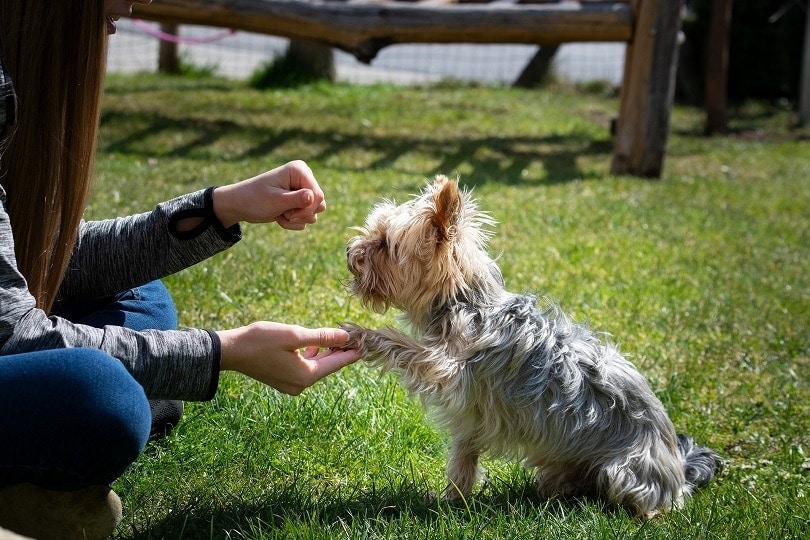
The problem with just being a dog walker is that many people suspect that anyone could do your job — after all, they do it for free all the time. If you can offer other services on top of walking dogs, though, you’ll be in much better shape.
The most obvious way to do this is by becoming a dog trainer. This is a skill that commands respect, which means it also commands high prices. Teaching the dogs you work with to become better-behaved will also make your life much easier on a daily basis.
You could also offer grooming services or partner with a professional groomer. Clients can send their dogs off with you, knowing that they’ll come back both tuckered out and clean. That’s worth a great deal of money.
You may also want to consider dog sitting services. This is a bit more involved, but it’s a great way to make easy money. You can either host dogs in your own home or live in the client’s house while they’re gone.
Some walkers even offer to take their clients’ pets to vet visits or give them medication at a certain time. You may even offer to spend time with dogs that are prone to separation anxiety — what better possible job could there be than to get paid to hang out with dogs?
2. Become a Professional Dog Trainer
You can learn so much about how to train dogs by reading books or watching educational videos, but it’s not enough to just know the job — you have to prove that you know how to do it.
That means getting certified. The only problem is that there isn’t a single “official” licensing board for dog trainers. There are a bunch of options out there, not all of which are reputable.
If you find a good one (like the Association of Professional Dog Trainers, for example), you can join their ranks and take whatever classes and tests that you need for them to certify you. Most also offer continuing education classes to ensure that you stay on top of your game.
Once you have that all-important piece of paper with your name on it, you can start calling yourself a “certified” dog trainer. This will allow you to raise your rates dramatically, as people are much more likely to trust a trainer with their dogs, even if they don’t actually want you to train them.
Of course, you should only call yourself a trainer if you have the skills to back it up. If you don’t, you’ll get found out sooner or later, and that’s the sort of thing that can torpedo your reputation and undo all your hard work. It’s just not worth it.
3. Start Your Own Agency
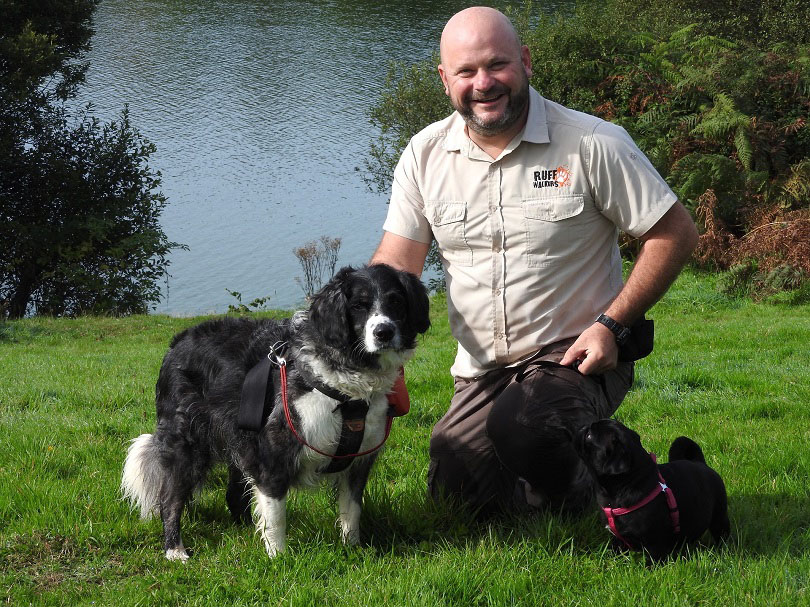
When it comes to making more money, you’ll find that the biggest challenge that you’ll face is the fact that you can only be in one place at a time. The solution to this is obvious: be in more places at once.
Unless you have some sort of cloning machine, though, the only way to do that is by hiring other walkers to work for you. It’s a win/win, as you can hook them up with clients whom they couldn’t get on their own, and they’ll give you a portion of their earnings, so you’ll be making money even when you’re not working.
This is the secret to making a lucrative career as a dog walker. You’ll need to have several employees whom you can trust to bring in cash at all hours of the day, but once you get to this point, the sky’s the limit. You may even consider scaling your business to other cities.
It bears mentioning, though, that adding more people also means adding more headaches. Finding trustworthy employees is tough, and managing all their drama and scheduling issues can be a hassle. The money that they’ll make you will be well worth it, though.
However, if walking dogs is truly what you love, then you should understand that by becoming an agency, you’ll almost certainly spend more time doing other business-related things instead. You may still sneak in a walk here and there, but for the most part, you’ll be busy running your business while other people walk the dogs for you.
Good Luck With Your New Career as a Dog Walker
Being a dog walker can be fun and rewarding, but it’s also an extremely challenging way to make a living. Most people stumble into it without doing any planning beforehand, and as a result, they fail to reach their true earning potential.
By doing your homework before starting your business, you’re already way ahead of the game. Hopefully, this guide will make it easier for you to realize your dreams — or at least earn a little more spending money between classes.
See also:
- When is the Best Time of Day to Walk My Dog? What You Should Know
- How to Protect Yourself from Stray Dogs While Walking: 8 Ways
Featured Image Credit: a katz, Shutterstock



